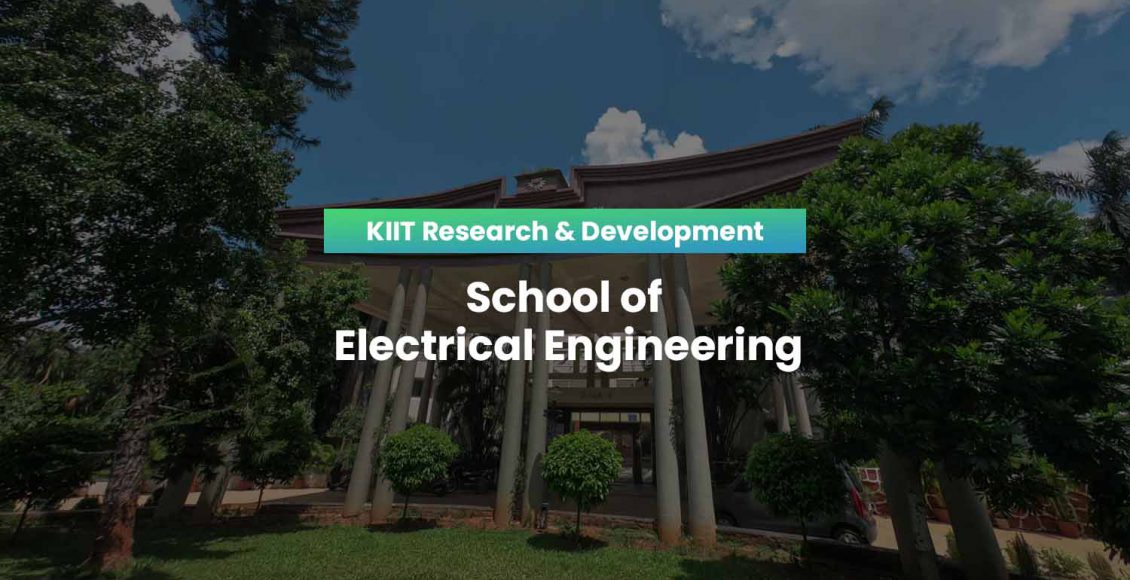School of Electrical Engineering (August 2021)
National/International Awards

Name of the Faculty: Dr. Lipika Nanda
Title of the Award: Young Researcher Award 2020
Award Given by: Institute of Scholars, Bangalore, Karnataka
About the Award
Dr. Lipika Nanda received Young Researcher Award for publication of paper entitled as “A Comparative Analysis of Symmetrical and Asymmetrical Multilevel Inverter with Reduced Number of DC Sources and Switches” in International Journal of Power Electronics and Drives. She was also recognized as a professional member of Institute of Scholars and a reviewer for the Journal of Institute of Scholars, i. e. International journal of Electronics, Electrical and Communication Engineering.
Journal Papers
1. Samal, S., Barik, P. K., and Hota, P. K. (2021), Harmonics Mitigation of a Solar PV-Fuel Cell Based Microgrid System Using a Shunt Active Power Filter, ECTI Transactions on Electrical Engineering, Electronics, and Communications, Vol.19, No.2, pp. 127–135. https://doi.org/10.37936/ecti-eec.2021192.222556.
Abstract
A Microgrid (MG) includes distributed generation, loads, energy storage, and a control system capable of operating in grid-connected mode and/or island mode. Moreover, harmonic distortion in MG networks has significantly reduced Power Quality (PQ), affecting the stability of the system. Hence, in this paper, the impact of PQ issues in an adopted standalone MG system is investigated in the presence of shunt active power filter (SAPF). The SAPF is realized using a conventional synchronous reference frame technique for current generation with a pulse-width modulation voltage source inverter technique to generate pulses for the inverter along with a PI controller to regulate the DC-link capacitor voltage.
2. Mohapatra, A., Nayak, B. and Mohanty, K.B., (2021), Analytical Approach to Locate Multiple Power Peaks of Photovoltaic Array under Partial Shading Condition and Hybrid Array Configuration Schemes to Reduce Mismatch Losses, Energy Sources, Part A: Recovery, Utilization, and Environmental Effects, pp.1–22. DOI: 10.1080/15567036.2021.1945710.
Abstract
The effect of Partial shading on PV array performance is analyzed through experimental results and MATLAB simulation. The effect of PS on PV characteristics is investigated in two conditions. In condition one, modules are not coupled with bypass diodes, and in condition two modules are equipped with bypass diodes. Two hybrid array configurations such as TCT with bridge link (TCT+BL) and TCT with honey-comb (TCT+HC) are proposed here. Performances of different array configurations are analyzed. It is observed that proposed array configurations outshine in performance by reducing the amount of ML and the number of local peaks in the P-V graph.
Conference Papers
1. Das, M.C., Dash, R., Swain, S.C and Subburaj, V. (2021),Performance Enhancement of PI-Controller Using SVM for DFIG-Grid Interconnected System, 2nd International Conference for Emerging Technology (INCET), Belagavi, India, pages 1–6, 10.1109/INCET51464.2021.9456262.
Abstract
The advantages of reactive power compensation can be insured by properly placing the STATCOM in a wind integrated power system. The modern power system is highly scattered and STATCOM is a shunt compensator, and it is used in large transmission lines for providing power quality compensation. Optimal placement of FACTS devices can be achieved by applying a stochastic algorithm which is a very diverse and continuous operation to the algorithm is going on. In this research work, multiple optimal solutions had been performed with a multi-objective problem to provide some flexibility for making a perfect decision about the placement of STATCOM.
2. Sahu, S., Swain, S., Choudhury, K. V.V.S , Samal, S., Pradhan, A. and Prusty, S. (2021), A Dynamic power management system for PV- Wind based DC Microgrid, 2nd International Conference for Emerging Technology (INCET), Belagavi, India, pp. 1–6,10.1109/INCET51464.2021.9456427
Abstract
This paper represents a dynamic power management system for a PV and Wind based hybrid microgrid using battery energy storage system and supercapacitor. The normal load variations are supported by battery energy storage while sudden changes in load or transient loads are supported by using supercapacitor bank. The dc microgrid is simulated under variable load and solar insolation. It was observed that power management system is efficient to keep dc bus voltage constant in all situations. The sudden changes in DC bus voltage due to transient loads have been effectively nullified by using supercapacitor.
3. Nanda, L., Mohapatra, S., Pradhan, A. and Prusty, S.R. (2021), Hybridized Symmetrical Multilevel Inverter Topology with Reduced Number of Switches and DC Sources, International Conference on Artificial Intelligence and Smart Systems (ICAIS), Coimbatore, India, pp. 1–6,https://doi.org/10.1109/ICAIS50930.2021.9395940.
Abstract
Research in several new topologies of Multilevel inverter (MLI) has been carried out rapidly day by day. Recently several topologies have been introduced achieving higher levels with reduced device counts and DC sources. In this paper a new hybrid symmetric MLI is proposed. This topology has reduced number of controlled switches, DC sources and numbers of capacitors which are very less compared to all the conventional topologies existed before. It reduces cost, size, complexity and hence enhances inverter efficiency.
4. Acharya, A., Nanda, L., Roy, T. and Misra, B. (2021),Boost Converter with Generalized Quadratic Boosting Cell with Reduced Capacitor Voltage Stresses,Lecture Notes in Electrical Engineering, Springer, India, https://doi.org/10.1007/978-981-15-7511-2_8.
Abstract
In this paper, a boost converter with generalized structure of quadratic boosting cell (n = 3) is proposed. The proposed structure can produce high magnitude output DC voltage from a low magnitude DC voltage by adjusting the number of quadratic cells in the generalized quadratic cell structure. As compared to cascaded boost converter, the proposed structure sustains lower capacitor voltages at same voltage gain. This feature reduces the capacitor voltage ratings as well as cost of the capacitors utilized in proposed structure as compared to cascaded boost converter. Further on comparison with the existing topologies, the proposed structure generates high voltage gain at a low duty ratio
Book Chapters
1. Debdas, S., Panigrahi, C.K., Kundu, S., Kundu P., Jha, R. (2021), IoT Applications in Interconnected Hospitals, in Machine Learning for Healthcare Applications,Mohanty, S.N., Nalinipriya, G., Jena, O.P., Sarkar, A. (Eds.),Wily, Scrivener Publishing LLC, pp. 393–408, Chapter 15,
https://onlinelibrary.wiley.com/doi/pdf/10.1002/9781119792611.ch15.
Abstract
Health for All aims at providing equal access to healthcare system specifically in underdeveloped and remote parts of a country. However, it comes with diversified challenges of accessibility, availability, and affordability. This is where the IoT comes to the rescue. Keeping the system as the backdrop, a framework to associate smart device in automatic health centres established by using Narrowband IoT and implement edge computing technology to be able to meet the requisite of dormancy in pharmaceutical proceedings can be brought to work.


